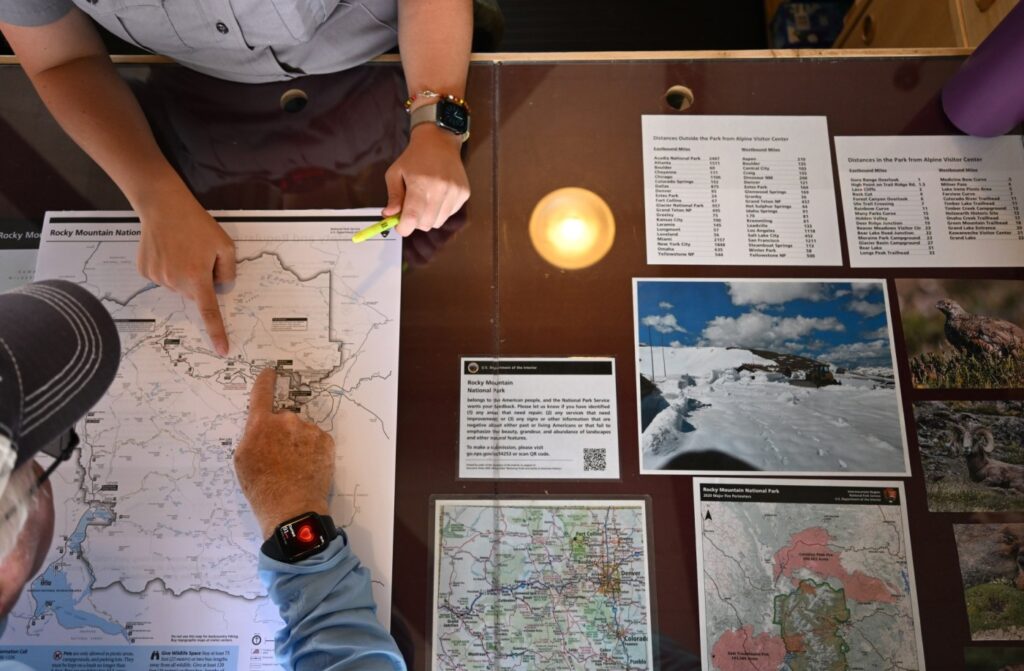Rick Williams, leader of the American Indian group People of the Sacred Land, expressed disbelief this month upon discovering signs posted at the Sand Creek Massacre National Historic Site in southeastern Colorado. Critics argue these signs could lead to a “whitewashing” of history. The signs, mandated on June 13 at all National Park Service sites by Interior Secretary Doug Bergum, begin by encouraging visitors to download a QR code and answer three survey questions. While the first two questions focus on site maintenance and service improvements, the third question has raised concerns. It asks visitors to identify “signs or other information that are negative about either past or living Americans or that fail to emphasize the beauty, grandeur, and abundance of landscapes and other natural features.”
Williams, whose ancestry is Oglala Lakota and Cheyenne, was particularly alarmed. “I was a little horrified, but I was scared, too,” he said. “Basically, this gives the average citizen a license to determine what they believe the truth is, and defending it against somebody who has an opposing view could create hostility.” The signs have also upset Japanese Americans after being posted at the Amache National Historic Site, a former World War II Japanese internment camp.
Historical Context and Reactions
The Sand Creek Massacre, where U.S. troops killed 230 Cheyenne and Arapaho people in 1864, is a critical historical site. Similarly, Amache was one of ten internment camps where over 10,000 Japanese Americans were incarcerated during World War II. Kirsten Leong, vice president of the non-profit Amache Alliance, criticized the signs as inappropriate for sites dedicated to recounting difficult historical truths. “The way they are written seems to be more applicable to some of the bigger national parks that talk about natural beauty,” she noted.
Bergum’s order, issued on May 20, follows an executive order signed by President Trump titled “Restoring Truth and Sanity to American History.” The order aims to address what Trump described as efforts to “rewrite” history through a distorted narrative. It directs land management bureaus to identify markers that “inappropriately disparage Americans past or living.”
Implications for National Parks
According to Kyle Patterson, public affairs officer at Rocky Mountain National Park, the signs have been placed in accessible locations such as visitor centers and trailheads. Sierra Willoughby, public information officer at Great Sand Dunes National Park, emphasized the importance of accuracy in storytelling. “Our visitors come to national parks to celebrate the beauty, abundance, and grandeur of America’s landscapes and extraordinary multicultural heritage,” she stated.
However, the initiative has sparked concerns about budget cuts. The National Park Service faces potential budget reductions of $900 million as part of Trump’s 2026 budget, which could impact the maintenance and operation of less visited historic sites like Amache and Sand Creek. Estee Rivera Murdock, executive director of the Rocky Mountain Conservancy, highlighted visitor feedback calling for increased funding, noting, “It’s hard to solicit feedback from folks to make changes if you don’t have any mechanism or budgets to make those changes.”
Future of Historical Sites
The potential closure of sites like Amache and Sand Creek due to budget constraints has raised alarms among advocates. Dawn DiPrince, chief executive of History Colorado, expressed concern over the proposed cuts. “We have parks that were not created just for visitation numbers,” she said. “They were created by a whole group of people, collectively, to tell really important American history.”
Williams remains optimistic about the Sand Creek Massacre site, noting its sacred significance to Native Americans. “Of those 6,400 visitors, probably 6,000 were American Indians,” he said. “They’re going to go there whether it’s a national park or not.”
As the debate over historical narratives and funding continues, the impact on America’s national parks and historic sites remains uncertain. The conversation highlights the ongoing struggle to balance historical truth with contemporary perspectives.
About The Author
 Keith Urban Ends Interview Abruptly Over Nicole Kidman Question
Keith Urban Ends Interview Abruptly Over Nicole Kidman Question Bob Dylan’s Hidden Hits: Songs He Wrote for Other Artists
Bob Dylan’s Hidden Hits: Songs He Wrote for Other Artists Scarlett Johansson Confronts Her Fears in ‘Jurassic World Rebirth’
Scarlett Johansson Confronts Her Fears in ‘Jurassic World Rebirth’ ‘Jurassic World Rebirth’ Revitalizes Franchise with Fresh Storytelling
‘Jurassic World Rebirth’ Revitalizes Franchise with Fresh Storytelling Exploring America’s Musical Landscape: Patriotic Anthems and Critical Voices
Exploring America’s Musical Landscape: Patriotic Anthems and Critical Voices